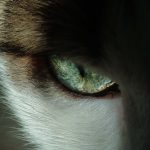Help Us to keep our shelter
Most people are curious about the vision of animals, do they see the same we do, or is it different? For people who have dogs, they know that they have very good hearing and smell, but what colors can they see?
The colors that we perceive daily occur because we have a specialized organ for this, which is the eye. The eye is sensitive to light and activated by electromagnetic waves whose wavelength ranges from 380 to 760 my (Tista 2006).
Some animals can see wavelengths that humans cannot, such as ultraviolet light. Animals can see in various ways and this depends on how their visual system is made up (Hugues 2008).
Colors can be distinguished by means of the retina found in the eye, there are two types of cells responsible for photoreception, the cones and the rods (photoreceptors), these contain photo pigments that produce chemical energy when exposed to light (Bjerkas 2004).
The specific cones are in charge of seeing certain colors such as green, red and blue and from the mixture of these other ranges of colors result.
Depending on the number of cones that the eye has, different wavelengths can be seen, this means color ranges. There are monochromatic (1 type of cone), dichromatic (2 types of cones), trichromatic (3 types of cones), tetrachromatic (4 types of cones) (Risco 2008). Most animals have 2 types of cones, humans have 3, therefore dogs do not see the same as people, dogs can see blue and yellow tones, therefore they cannot distinguish red and green. However, they have a greater number of rods that allow them to see more clearly in the dark. The rods in many animals are more important than the cones since they need to see at dusk and at night.


In other types of animals such as birds or insects, the cones are more important since their reproduction and feeding depend on the range of colors they can see.
In the case of dogs, the sticks are more important to be able to see better in the dark. In addition, for dogs, the sense of vision is not the main one, it is smell and hearing.
References
Hugues B.2008.color vision in animals. National Institute of Endocrinology. Havana Cuba.
- Bjerkas E. 2004. Veterinary Ophthalmology. Second Seminar WSAVA Continuing Education Program. Havana city.
Del Risco S, Izquierdo N, Alonso M.2008. The vision and the animals.
Tista C. 2006. Animals and me. México. Ediciones y Grál kos EON, P 27 50.

